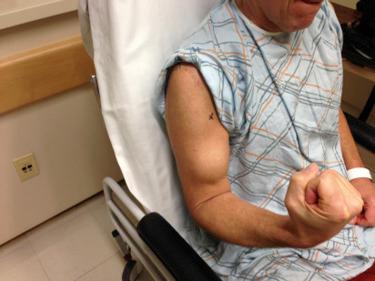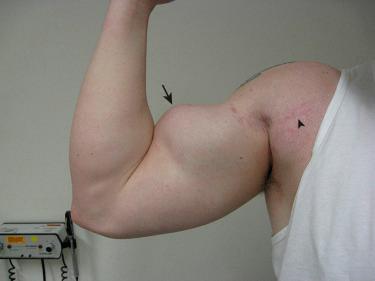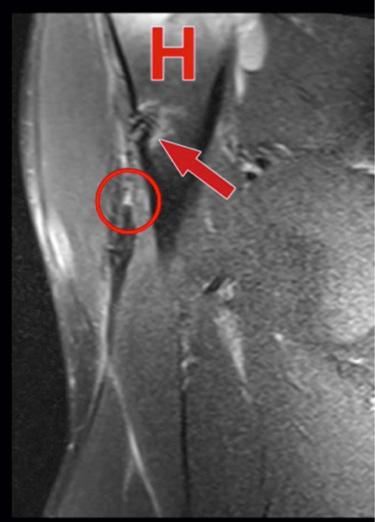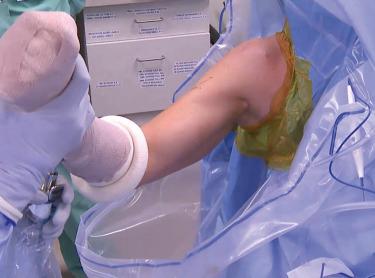Physical Address
304 North Cardinal St.
Dorchester Center, MA 02124
Ruptures of the long head of the biceps tendon (LHBT) usually occur in patients with intrinsic tendon degeneration and concomitant rotator cuff tears. Even though nonoperative management is successful in most patients, some patients may suffer from persistent symptoms such as weakness, pain, cramping, and cosmetic deformity. The same symptoms may arise after a surgical biceps tenotomy or after a failed biceps tenodesis. A variety of techniques for biceps tenodesis have been described, including both open and arthroscopic technique with multiple fixation sites and devices.
With the arm abducted and slightly internally rotated, the skin is incised along the axillary crease from 1 cm superior to 3 cm inferior to the inferior border of the pectoralis major tendon. Using the interval between the pectoralis major tendon superiorly and the short head of the biceps inferiorly, the LHBT is retrieved in the bicipital groove, externalized, and whipstitched. A unicortical bone tunnel is reamed in the inferior aspect of the bicipital groove and the tendon is inserted using an interference screw, additionally tying the sutures on top of the screw.
Usually previous pain in the shoulder and/or upper arm
Sudden painful event usually with trauma (spontaneous rupture based on degenerative changes)
Previous surgical tenotomy or LHBT tenodesis
Popeye deformity
Pain, cramping
Weakness with elbow flexion and supination
Frequently associated with a rotator cuff tear
Popeye deformity ( Figs. 51.1 , 51.2 )


Pain along the bicipital groove and extending distally
Cramping
Weakness with elbow flexion and supination
( Fig. 51.3 )

Plain x-rays, usually normal, can rarely display widening or fracture of the previous tenodesis drill hole.
CT: only rarely indicated in case of suspected bony pathology.
MRI: displays the tendon stump length and quality (best visualized in T2, coronal view) and amount of distal retraction. Surrounding edema in the acute phase. LHBT absent from bicipital groove on shoulder view. May need more distal MRI to see the retracted LHBT.
Nonoperative treatment: usually effective but will have persistent deformity.
Operative treatment: Open subpectoral tenodesis is the method of choice. Arthroscopic and open suprapectoral tenodesis is not feasible once the LHBT is retracted.
Axillary crease
Inferior border of the pectoralis major tendon and anterior border of the deltoid muscle
Interval between the pectoralis major tendon superiorly and the short head of the biceps tendon inferiorly
Inferior aspect of the bicipital groove
Failed nonoperative management
Pain, cramping, weakness with elbow flexion and supination
Patient not willing to accept cosmetic deformity
Beach-chair position ( Fig. 51.4 )

Pneumatic arm-holder
Diagnostic shoulder arthroscopy first
Arm in abduction and slight internal rotation
Easy access to the bicipital groove
Diagnostic shoulder arthroscopy prior to tenodesis may recognize and address potential intraarticular pathologies. There may be a remnant biceps stump in the joint.
Allow for intraoperative assessment of biceps length-tension relationship by elbow motion
Extend the incision far enough distally to retrieve the retracted LHBT. Incision courses obliquely along the anterior border of the deltoid.
Identify tendon and muscle tendon units. Visualize the muscle tendon junction and use a nerve stimulator if unsure of anatomy.
Become a Clinical Tree membership for Full access and enjoy Unlimited articles
If you are a member. Log in here